Microcosm Within a Macrocosm - The Link Between Neurotransmitters & Neuroplasticity: Part 1 - Understanding Neurotransmitters
- Rohan Naidoo

- Jul 9
- 13 min read
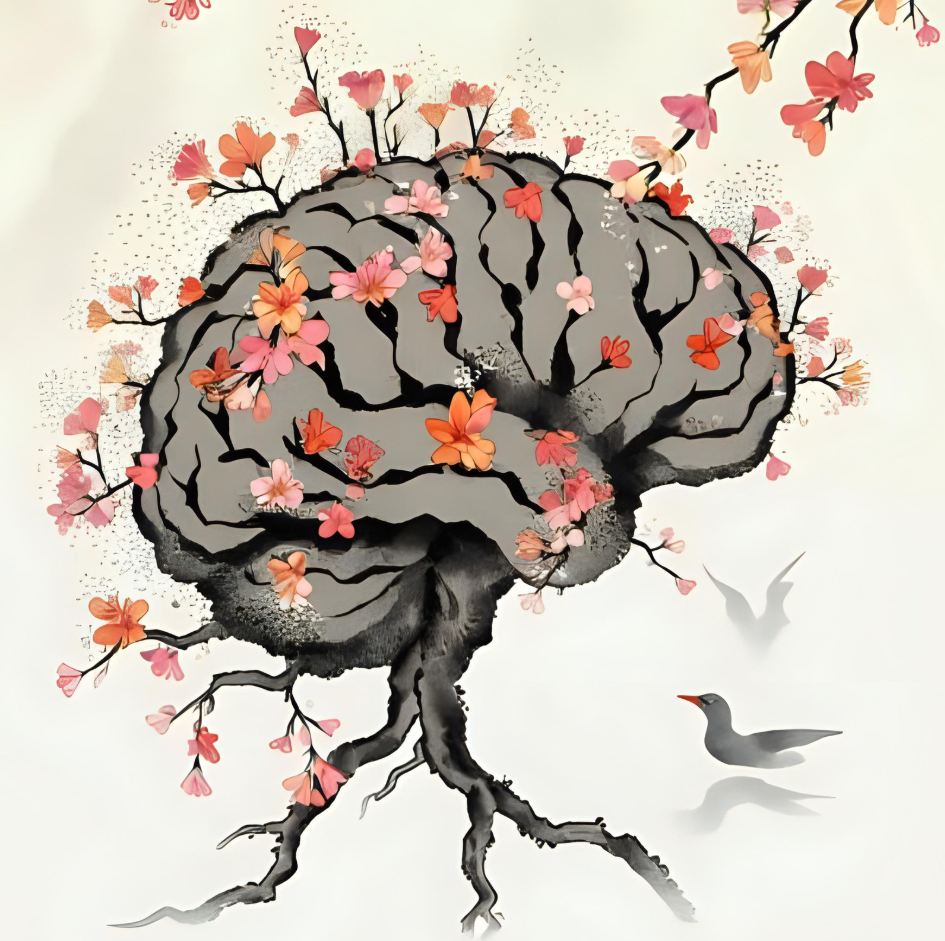
The brain is essentially the control center of the body. Facilitating voluntary & involuntary movement in all parts of the body, the brain monitors & evaluates physiological processes, helps incorporate & understand external stimuli, all while simultaneously juggling handfuls of other integrated tasks. However, the brain gives way to consciousness, it gives way to emotion. It aids in cognition, learning & memory; all the factors that go on to define us as completely unique & authentic personalities. “How does the brain have the capacity to do all of this?” you might be asking yourself. The answer is a complex, interconnected & multi-faceted system that incorporates our identity with our responses to our environment as a means of survival within it. With every response to a stimulus, a higher function & purpose within the brain is simultaneously being achieved to not only “educate” us, but to define & broaden the plasticity of our minds. In this article, we will be exploring one of the many layers to this complex organ & its operations; how the role & function of neurotransmitters relates to the reforming & restructuring of the brain, ultimately playing a role in our sense & perception of the world, others & ourselves.
An Introduction to Neurotransmitters
A neurotransmitter is a chemical messenger, formed through catabolic reactions & stored in the synaptic vesicles at the axon terminals of neuronal cells. They are tasked with either promoting or inhibiting electrochemical impulses along the nervous system to produce sufficient & appropriate responses to stimuli. Additionally, neurotransmitters perform a higher function that often stimulates memory, cognition, emotion & / or other higher-order functions that help us “digest” experiences as a means for survival, helping also determine our unique cognitive & intrinsic traits.
As seen in my previous article, Where Life Meets Technology - The Science of BCIs, electrochemical impulses are required to travel across synaptic clefts, otherwise known as chemical synapses. Additionally, electrical impulses also typically travel between the “channels” of lateral neurons, electrical synapses, serving as a stimulus for the movement of neurotransmitters. Let’s review the electrical & chemical nature of action potential signalling, neurotransmitters & the traits that allow for effective & appropriate responses of the nervous system.
The movement of a neurotransmitter is stimulated by a nerve impulse, otherwise known as an action potential. In this case, the cell membrane of a neuron is more negatively charged on the inward-facing side as opposed to the outer-face of its membrane, facing a voltage of -70mV. The membrane is lined with proteins that serve as channels for sodium & potassium ions. When a stimulus is present, such as a contact force on the neurons when an object touches it, directly or indirectly, the normal state of the cell is interrupted. The cytoplasm of the cell would temporarily change its shape, changing the charge of the cell membrane. If the cell membrane reaches a voltage of more or equal to -55mV, an action potential will occur. In that case, the voltage-gated sodium ion channels would open & allow for sodium ions to travel along a diffusion gradient into the cell; the process of the action potential in which the cell is depolarised. This would continue for a brief period until the sodium channels “shut close” when the membrane reaches a charge of 30mV & equilibrium is met. When this happens, the voltage-gated potassium ion channels open to allow for equilibrium as potassium ions travel along a diffusion gradient out of the cell, repolarising the cell membrane. Since, the concentration of potassium ions is greater in the cell than that outside it, potassium ions would tend to keep on diffusing at great rates out of the cell. In this short period in which the potassium ion channels are still being closed & the protein molecules serving as the transport of ions back to their original locations are still pumping ions to their relative locations (sodium-potassium pump), the charge of the cell membrane is overshot, known as hyperpolarisation. In this step of the action potential, increased frequency & strength of the stimulus would be required to have the membrane reach the threshold potential for an action potential to occur (-55mV).
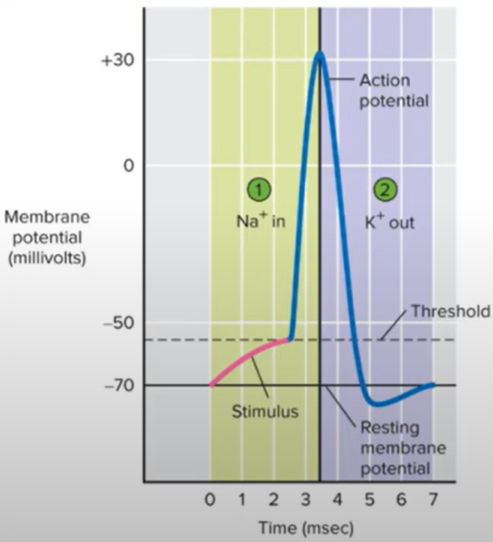

The nerve impulse which acts along the cell membrane stimulates the opening of the voltage-gated calcium channels in the depolarisation phase, resulting in an influx of calcium ions into the cell. Much like the potassium & sodium ions, the calcium ions travel along a diffusion gradient, stimulating the release of adenosine triphosphate (ATP) from the mitochondria located around the axon terminals. This allows for synaptic vesicles to fuse together & release a neurotransmitter into the synaptic cleft with sufficient energy.
It is important to note that through hereditary information & the enzymes produced by each cell as a result, only one neurotransmitter is produced by a neuron, which is particularly important in understanding how this gives rise to certain responses & higher-order functions in response to certain stimuli.
Before we move on, it would be helpful to now understand the different structures, functions & outcomes of the different neurotransmitters.
The vast variety of neurotransmitters can be classified into 4 broad categories: amino acids, monoamines, acetylcholines & unconventional neurotransmitters. Each of the neurotransmitters have nuanced functions & purposes that allow for vast & appropriate responses to be provided by the nervous system. The most well-known of the amino acids is aspartic acid, glutamate, glycine & GABA (Gamma-Aminobutyric Acid). Consisting of a carboxyl group, an amino group, a central carbon atom & a variable chain of elements & / or compounds, amino acids typically balance & bridge the physiological with the cognitive states of oneself.
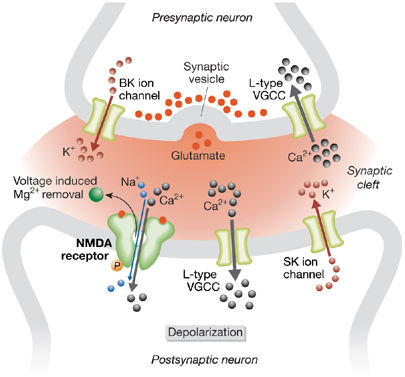
Amino Acids
Glutamate is the most abundant excitatory neurotransmitter in the brain, most commonly noted for its crucial importance in learning, thinking & memory. GABA, on the other hand, is the most common inhibitory neurotransmitter found in the Central Nervous System. Reducing the responsiveness of neurons, preventing overstimulation of the nerve cells, GABA is often considered as a mediator, maintaining the delicate balance of neural activity & preventing many conditions related to the overstimulation of neurons, like irritability, anxiety, depression & conditions from an overshot glutamate-mediated excitatory synapse response (see Where Life Meets Technology - The Science of BCIs), such as Alzheimer’s & Parkinson’s Disease. Aspartate serves an underlying purpose, increasing the likeliness of depolarisation of the postsynaptic membrane, allowing for greater & more efficient transmission. Additionally, aspartic acid maintains the balance of energy production, promotes amino acid & protein synthesis, while serving a crucial function in hormonal balance within the body / bloodstream. Glycine is an inhibitory neurotransmitter, mostly involved with “fine-tuning” neural transmissions & information, while acting as co-agonists to meet the biological & cognitive effects of both GABA & glutamate.
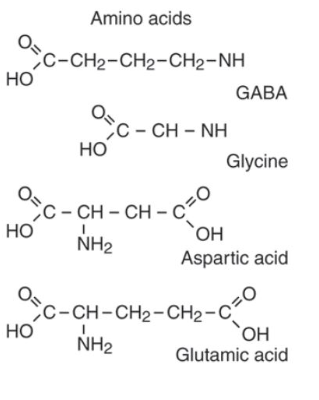
Monoamines
The four most commonly noted monoamines are serotonin, dopamine, norepinephrine & epinephrine; responsible for regulating complex emotions & cognitive abilities, complex motor functions involving cognitive input & processing & / or transmitting information with a direct impact & link on perception & physiological processes, such as pain & gastrointestinal functions.
Serotonin, an indoleamine, serves a more nuanced function in support of the amino acids that regulates anxiety, aids in sleeping patterns, pain, appetite & even mood. Additionally, thermoregulation, respiratory conditions & cardiovascular conditions are associated with serotonin in response & in alignment with stimuli & emotions transmitted by serotonin. Dopamine is the body’s reward system that regulates & aids memory, learning, focus, pleasure, motivation & movement in response to these prior mentions. Epinephrine & norepinephrine work together in a complex manner to regulate & stimulate the “fight or flight” response. They collectively increase blood sugar, blood pressure & so on to different muscles, enhance concentration & alertness. Norepinephrine is a broader neurotransmitter, more subtle in effect that can be used in a broader scope than that of epinephrine.

Acetylcholines & Unconventional Neurotransmitters
Acetylcholines are excitatory neurotransmitters that serve a broad & largely physiological function within the body, that consists of a choline molecule bonded to an acetyl group & variable group of compounds & / or elements. Acetylcholines are specifically involved in muscle contractions; they can be found in large densities at neuromuscular junctions & within the autonomic nervous system to innervate blood pressure & even gut motility like peristalsis. They supplement & support the specific functions of the monoamines where cognitive inputs may or may not necessarily be involved in muscle innervation, such as within the ANS. Meanwhile, unconventional neurotransmitters include non-polar molecules, endocannabinoids & neuropeptides. Non-polar molecules such as nitric oxide & carbon monoxide are not long lasting in the nervous system & often tend to serve a temporary function before forming other products for different uses in the body. These non-polar molecules can easily pass through membranes & stimulate precise potentials within cells to cater for physiological processes. They are involved in retrograde transmission to modulate, tailor & elicit appropriate reactions from presynaptic cells for appropriate responses to stimuli. They also bind with metabotropic receptors on the postsynaptic neuron, allowing for tailored, mediated & appropriate transmissions & responses from the nervous system. Endocannabinoids essentially maintain homeostasis, while neuropeptides synthesise proteins, stimulate hormone release & balance within different parts of the body.
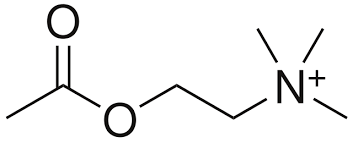
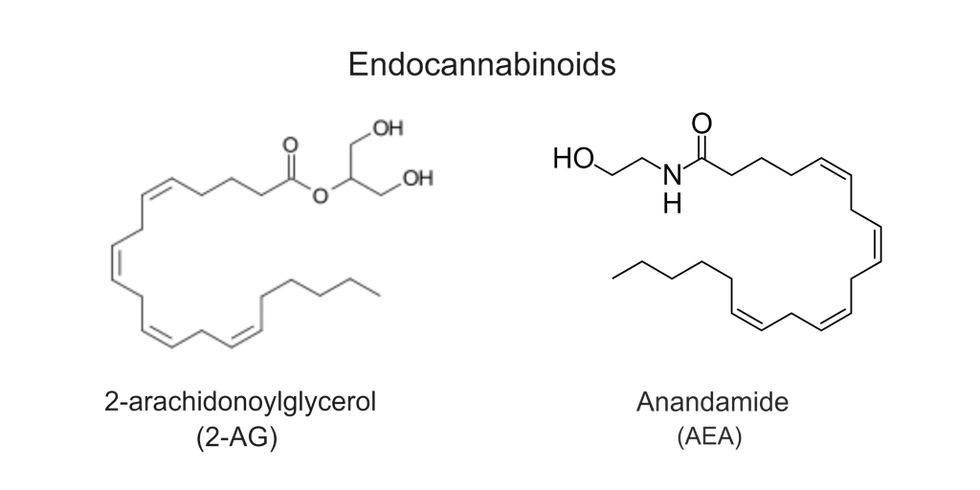
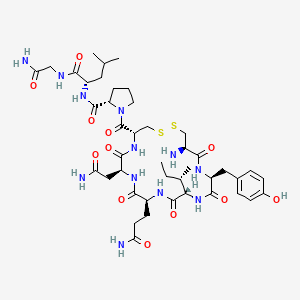
If you haven’t yet noticed, neurotransmitters work in a complicated manner, involving a “layered” interaction between each other for optimal effectiveness. As seen before, neurotransmitters can inhibit & excite neurons in varying & unique ways depending on a stimulus. Some neurotransmitters work with each other for optimal biological effects, like the relationships between glycine, GABA & glutamate. Neurotransmitters can work together to produce nuanced & unique responses, while they can be used in a broader sense to meet other expectations of the body, like epinephrine & norepinephrine. The multitude of different neurotransmitters affecting different parts of the brain & prompting unique responses amidst each other & through physiological & cognitive responses further prompts unique responses to stimuli. Other neurotransmitters might compensate for others, like acetylcholine with the monoamines. Glutamate might be seen as a medium for the majority of communication within the nervous system, but gives way to many more neurotransmitters that help maintain homeostasis within the body, like the pituitary peptides. Transmitters also have the capability to mediate responses & become excitatory or inhibitory depending on where they originated within the body, allowing for more precise & appropriate responses of the body. These include dopamine, norepinephrine, epinephrine & oxytocin, a neuropeptide & neurohormone.
With an in-depth understanding of the different & most common neurotransmitters one might see, depending on the neurotransmitter, the genetic make-up of the presynaptic neuron & the enzymes it produces, a neurotransmitter will be released from the vesicles in the axon terminals to travel across the fluid-filled synaptic space / cleft, to bind with the receptors on the dendrites of the postsynaptic neuron through diffusion.
As you may have noticed, diffusion & diffusion gradients play a vital role in transmitting information & carrying electrochemical impulses throughout the nervous system, which are often the result of a stimulus.
Neurotransmitters are either inhibitory, excitatory, or otherwise modulatory, while receptors on the postsynaptic neuron are either ionotropic or metabotropic. Neurotransmitters will either excite or inhibit the stimulation of the postsynaptic neuron, closing or opening gated ion channels. Meanwhile, the receptors will either result in an immediate release of ions to stimulate the neuron, or certain other receptors will allow for a slow, mediated response, in which an ion channel located elsewhere along the membrane will be opened through other molecules, likely the non-polar neurotransmitter molecules that travel freely within the cell - modulatory neurotransmitters. These receptors are called ionotropic & metabotropic receptors, respectively. The purpose of metabotropic receptors are to modulate the activity & transmission across cells within a singular cell to allow for a slower, mediated & more accurate response of the body to a stimulus, while ionotropic receptors allow for quick transmission & a complex, layered response of the body in addition to the signals carried from neurons influenced by metabotropic receptors.
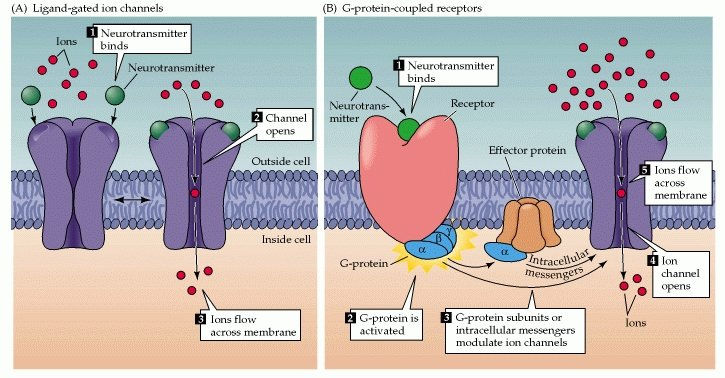
The inhibitory & excitatory functions of neurotransmitters, along with the mediatory, modulatory function of the metabotropic receptors & non-polar neurotransmitters, allows for appropriate information & signals to reach different parts of the central nervous system, that all work together to provide a complex & unique cognitive, physical & physiological response to a stimulus. While neurotransmitters of the same nature are associated with certain parts of the brain, they can also be found to carry information to other & smaller parts of the brain for complete integration of a stimulus & response into the cognitive & physiological systems of the body, a complete & appropriate reaction of the body.
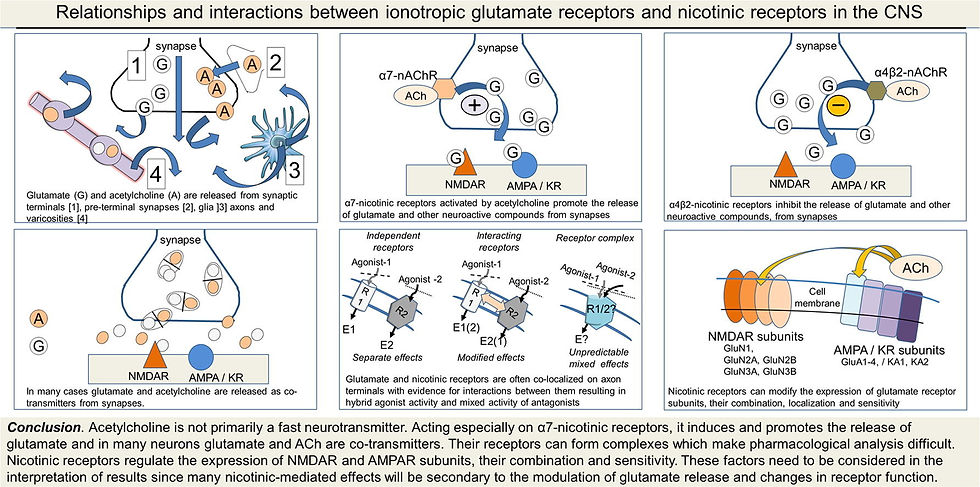
You might be asking yourself now, “How do neurotransmitters fit into the bigger picture? How is it that they can control such vast physiological processes & also guide our ability to learn & think, to feel & remember?”
It all comes down to the diverse function & variability of neurotransmitters. Some neuropeptides will act as neurohormones, prompting a higher blood pressure, increased focus & oxygen intake when you’re “flooded” with oxytocin. The frequency of action potentials, determined by the “strength” of a stimulus, can prompt many other hormones or responses from the body. The frequency of action potentials, the location of origin, the metabotropic receptors & their connections to different parts of the brain are all variables that can be easily changed with stimuli to control our bodily functions & reactions. Neurotransmitters play the roles that many other organs & systems of the body cannot. The ability to be aroused for copulation, the ability to run from danger within a matter of seconds; the systems of the body cannot adapt to situations without the basis of communication within our bodies - the neurotransmitters within our nervous system. Lastly, as Functionalism & some of the long-debated issues presented by the mind-body spectrum of duality & monism would have it, it is proposed that cognitive & higher-order functions are essential for survival & are a part of a larger biological process that keeps us alive. Our ability to focus, remember, think & learn allows us to remember our response to a dangerous or uncomfortable scenario as much as a pleasurable one, hence allowing us to foresee situations & make choices that will best prolong our lives & keep us alive in the present moment.
Neurotransmitters are the microcosm within the macrocosm of everything that makes us up; our physiological processes, our movement, our ability to feel emotion & think beyond just a simple encounter. While they give rise & understanding to ideas of the mind-body spectrum, there is still much to be learnt about these messengers & just how they are capable of forming the foundation of our lives & our identity. In the next article, we will be exploring this idea slightly more & connecting neurotransmitters to the role they play in our ability to think & process information uniquely. Until then, consider looking into the sources below if you found this article fascinating.
A Visual Representation of Action Potentials - Action Potentials Made Easy
Understanding How Neurotransmitters Evoke Cognitive Abilities & Higher-Order Functions - Insights to a Largely Unsolved Question
Insights to the Interplay, Underlying Functions & Relationship Between & Within Cellular Structures & Neurotransmitters
Bibliography
Branson, J.S. (2024). Introduction to Neurons. [online] YouTube. Available at: https://www.youtube.com/watch?v=cbGIAnQfgXo [Accessed 2 Jul. 2025].
Caire, M.J., Varacallo, M. & Reddy, V. (2023). Physiology, Synapse. [online] Nih.gov. Available at: https://www.ncbi.nlm.nih.gov/books/NBK526047/.
Citri, A. & Malenka, R.C. (2007). Synaptic Plasticity: Multiple Forms, Functions, and Mechanisms. Neuropsychopharmacology, 33(1), pp.18–41. doi:https://doi.org/10.1038/sj.npp.1301559.
Cleveland Clinic (2022). Gamma-Aminobutyric Acid (GABA). [online] Cleveland clinic. Available at: https://my.clevelandclinic.org/health/articles/22857-gamma-aminobutyric-acid-gaba.
Cleveland Clinic. (2022). Neurotransmitters. [online] Available at: https://my.clevelandclinic.org/health/articles/22513-neurotransmitters.
Demarque, M. & Spitzer, N.C. (2011). Neurotransmitter phenotype plasticity: An unexpected mechanism in the toolbox of network activity homeostasis. Developmental Neurobiology, [online] 72(1), pp.22–32. doi:https://doi.org/10.1002/dneu.20909.
Ferraguti, F. & Sigemoto, R. (2006). Metabotropic glutamate receptors. Cell and tissue research, [online] 326(2). doi:https://doi.org/10.1007/s00441-006-0266-5.
Freedman, M. (2025). Neurotransmission. [online] MSD Manual Professional Edition. Available at: https://www.msdmanuals.com/professional/neurologic-disorders/approach-to-the-neurologic-patient/neurotransmission [Accessed 12 May 2025].
Froudist-Walsh, S., López-Barroso, D., José Torres-Prioris, M., Croxson, P.L. & Berthier, M.L. (2017). Plasticity in the Working Memory System: Life Span Changes and Response to Injury. The Neuroscientist, 24(3), pp.261–276. doi:https://doi.org/10.1177/1073858417717210.
Gil-Loyzaga, P. (2009). Neurotransmitters and neuroplasticity during cochlear development: in vivo and in vitro studies. Audiological Medicine, 7(1), pp.11–21. doi:https://doi.org/10.1080/16513860802628225.
Hansen, J.Y., Shafiei, G., Markello, R.D., Smart, K., Cox, S.M.L., Nørgaard, M., Beliveau, V., Wu, Y., Gallezot, J.-D., Aumont, É., Servaes, S., Scala, S.G., DuBois, J.M., Wainstein, G., Bezgin, G., Funck, T., Schmitz, T.W., Spreng, R.N., Galovic, M. & Koepp, M.J. (2022). Mapping neurotransmitter systems to the structural and functional organization of the human neocortex. Nature Neuroscience, 25(11), pp.1569–1581. doi:https://doi.org/10.1038/s41593-022-01186-3.
Kreber, L. (2025). Neuroplasticity | Centre for Neuro Skills. [online] Traumatic Brain Injury Rehabilitation | Centre for Neuro Skills. Available at: https://www.neuroskills.com/neuroplasticity/.
La Rosa, C., Parolisi, R. & Bonfanti, L. (2020). Brain Structural Plasticity: From Adult Neurogenesis to Immature Neurons. Frontiers in Neuroscience, 14(75). doi:https://doi.org/10.3389/fnins.2020.00075.
Leuner, B. & Gould, E. (2010). Structural Plasticity and Hippocampal Function. Annual Review of Psychology, [online] 61(1), pp.111–140. doi:https://doi.org/10.1146/annurev.psych.093008.100359.
Li, H., Hirano, S., Furukawa, S., Nakano, Y., Kojima, K., Ishikawa, A., Tai, H., Takuro Horikoshi, Takashi Iimori, Uno, T., Matsuda, H. & Kuwabara, S. (2020). The Relationship Between the Striatal Dopaminergic Neuronal and Cognitive Function With Aging. Frontiers in Aging Neuroscience, 12. doi:https://doi.org/10.3389/fnagi.2020.00041.
Monday, H.R., Younts, T.J. & Castillo, P.E. (2018). Long-Term Plasticity of Neurotransmitter Release: Emerging Mechanisms and Contributions to Brain Function and Disease. Annual Review of Neuroscience, [online] 41(1), pp.299–322. doi:https://doi.org/10.1146/annurev-neuro-080317-062155.
Moore, S. (2019). What is Neuronal Plasticity and Why Is It Important? [online] News-Medical.net. Available at: https://www.news-medical.net/life-sciences/What-is-Neuronal-Plasticity-and-Why-Is-It-Important.aspx.
Muhammad Saad Yousuf & Kerr, B.J. (2016). The Role of Regulatory Transporters in Neuropathic Pain. Advances in pharmacology, 75, pp.245–271. doi:https://doi.org/10.1016/bs.apha.2015.12.003.
Pittenger, C. & Duman, R.S. (2007). Stress, Depression, and Neuroplasticity: A Convergence of Mechanisms. Neuropsychopharmacology, [online] 33(1), pp.88–109. doi:https://doi.org/10.1038/sj.npp.1301574.
Professional Supplement Center (2015). Neurotransmitters And Their Functions Dopamine, Glutamate, Serotonin, Norepinephrine, Epinephrine. YouTube. Available at: https://www.youtube.com/watch?v=09eVouoCLaw.
Professor Dave Explains (2019). Neurotransmitters: Type, Structure, and Function. YouTube. Available at: https://www.youtube.com/watch?v=LOHKVp8hn7o.
Puderbaugh, M. & Emmady, P.D. (2023). Neuroplasticity. [online] National Library of Medicine. Available at: https://www.ncbi.nlm.nih.gov/books/NBK557811/.
Purves, D., Augustine, G.J., Fitzpatrick, D., Katz, L.C., LaMantia, A.-S., McNamara, J.O. & Williams, S.M. (2001). Neurotransmitter Synthesis. Neuroscience. 2nd edition, [online] 2. Available at: https://www.ncbi.nlm.nih.gov/books/NBK11110/.
Queensland Brain Institute (2024). Action potentials and synapses. [online] The University of Queensland. Available at: https://qbi.uq.edu.au/brain-basics/brain/brain-physiology/action-potentials-and-synapses.
Reed, E. (2020). Action Potentials. [online] YouTube. Available at: https://www.youtube.com/watch?v=C_Uum6ZJ2Rc [Accessed 2 Jul. 2025].
Roth, B.L. (2019). Molecular pharmacology of metabotropic receptors targeted by neuropsychiatric drugs. Nature Structural & Molecular Biology, [online] 26(7), pp.535–544. doi:https://doi.org/10.1038/s41594-019-0252-8.
Speed Pharmacology (2016). NEURON ACTION POTENTIAL (MADE EASY). YouTube. Available at: https://www.youtube.com/watch?v=XnksofQN8_s.
Thomas, M.S.C. (2016). Do more intelligent brains retain heightened plasticity for longer in development? A computational investigation. Developmental Cognitive Neuroscience, 19, pp.258–269. doi:https://doi.org/10.1016/j.dcn.2016.04.002.
Tyng, C.M., Amin, H.U., Saad, M.N.M. & Malik, A.S. (2017). The Influences of Emotion on Learning and Memory. Frontiers in Psychology, [online] 8(1454). doi:https://doi.org/10.3389/fpsyg.2017.01454.
Zhao, L., Jiao, Q., Yang, P., Chen, X., Zhang, J., Zhao, B., Zheng, P. & Liu, Y. (2011). Metabotropic glutamate receptor 5 promotes proliferation of human neural stem/progenitor cells with activation of mitogen-activated protein kinases signaling pathway in vitro. Neuroscience, [online] 192, pp.185–194. doi:https://doi.org/10.1016/j.neuroscience.2011.06.044.
Assessed and Endorsed by the MedReport Medical Review Board






